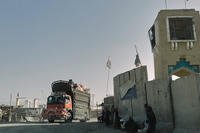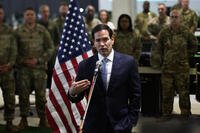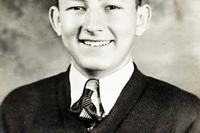The Army and Air Force Exchange Service in 2015 paid $237 million to service recreation programs, a 5-percent increase from the previous year, officials announced this week, even as the debate continued in Congress over the fate of the military retail systems.
The services' morale, welfare and recreation programs rely on the annual dividend to fund the bulk of their expenses. But how the Exchanges operate -- and the funds they contribute to the programs as a result -- have been caught up in the ongoing debate over the military commissary system.
Unlike the Exchanges, the bulk of the Defense Commissary Agency's operating budget is funded by a $1.4 billion taxpayer subsidy, while the Exchange largely pays for itself.
Some lawmakers want to eliminate the commissary subsidy and instead make the system self-sustaining. But doing so would likely result in price increases at commissary stores, where goods are sold at cost, plus a 5-percent surcharge.
Commissary supporters as well as Defense Department officials say any increase to prices could result in a decrease in shoppers at the Exchange system, since those are generally located next to a commissary.
A report last year by the Boston Consulting Group, cited in a new Pentagon study released this month, said about 20 percent of Exchange store visitors are due to foot traffic from the commissary. As a result, it states, any drop in sales at the commissary could result in a drop in sales at the Exchange -- and a decrease in the annual payout to the service recreation programs.
The $237 million payout at the exchange service, known as AAFES, in 2015 compared to $224 million in 2014 and $208 million in 2013. The increase is driven by higher sales and management improvements, officials said.
"The increase in the Army & Air Force Exchange Service's dividend to military quality-of-life programs for fiscal 2015 can be attributed to improved sales margins and a strong focus on operating efficiency in selling, general and administrative (SG&A) costs, which include personnel costs, other expenses and depreciation," Julie Mitchell, an AAFES spokesperson, said in a statement.
"The reduction in costs allowed the Exchange to improve the bottom line (operating profit), which generated higher dividends in fiscal 2015," she added.
--Amy Bushatz can be reached at amy.bushatz@military.com. Follow her on Twitter at @amybushatz.





























